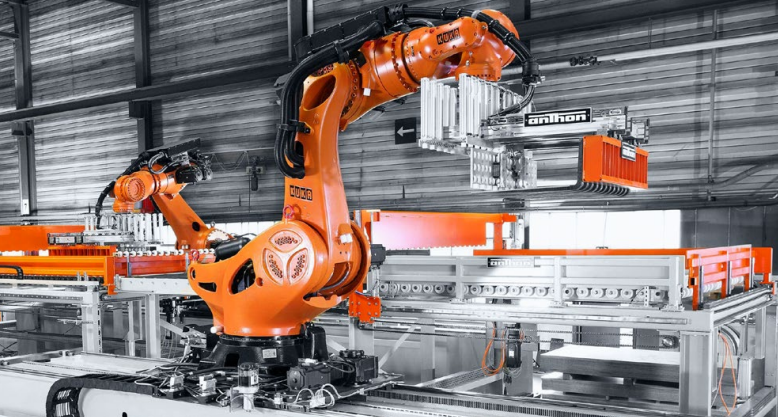The 9 types of explosion protection, the various types of explosion protection symbols and common equipment:

1 Increased safety explosion-proof (Standard No.: GB/T 3836.3)
Explosion-proof marking: Ex e
Explosion-proof principle: for normal operation will not produce arcs, sparks and dangerous high-temperature equipment, if the structure and then take some protective measures, so that the equipment in normal operation or approved overload conditions do not occur arcs, sparks and overheating phenomena, you can enhance the safety of equipment to achieve the purpose of explosion-proof.
Commonly used safety-enhancing equipment: safety-enhancing motors, safety-enhancing electrical appliances, safety-enhancing lamps, etc.
2 Intrinsically safe explosion-proof (Standard No.: GB/T3836.4)
Explosion-proof marking: Ex ia
Explosion-proof principle: The electrical sparks and surface temperatures generated by the adopted circuitry in normal operation or under specified fault conditions cannot cause the explosion of specified explosive mixtures.
Commonly used intrinsically safe devices: Intrinsically safe temperature transmitters, pressure transmitters, liquid level transmitters, etc.
Note: Intrinsically safe explosion protection is the highest level of explosion protection.
3 Pressurization pressure type explosion-proof (Standard No.: GB/T3836.5)
Explosion-proof marking: Ex p
Explosion-proof principle: Inside the shell of the equipment is continuously filled with protective gases, such as fresh air, so that the air pressure inside the equipment is higher than that outside, so that the external combustible gases can not enter or do not form to reach the explosive concentration. It is also equipped with gas pressure detection and combustible gas concentration alarm device, which can automatically cut off the power supply in the event of insufficient pressure, combustible gas concentration higher than the dangerous concentration and other dangerous situations.
Commonly used pressurization pressure type equipment: Pressurization pressure type analysis cabin.
4 Oil-filled type defence (standard number: GB/T3836.6)
Explosion-proof marking: Ex o
Explosion-proof principle: the device or the whole equipment that may have sparks or arcs inside the equipment is immersed in transformer oil to isolate it from flammable gas mixtures.
Commonly used oil-filled equipment: explosion-proof switches, terminal blocks, etc.
5 Sand-filled explosion-proof (standard number: GB/T3836.7)
Explosion-proof marking: Ex q
Explosion-proof principle: in the shell of the equipment filled with sand material, so that the equipment in the specified conditions, the shell generated by the arc of the flame propagated by the shell wall or the surface of the sand material superheated temperature, can not ignite the surrounding explosive mixture.
Commonly used sand-filled equipment: capacitors, fuses, transformers, etc.
6 Non-sparking type explosion-proof: (Standard No.: GB/T3836.8)
Explosion-proof marking: Ex n
Explosion-proof principle: normal operation can not ignite the surrounding explosive mixture, and generally does not produce electrical equipment that can cause ignition faults.
Commonly used non-sparking type equipment: motors, lighting fixtures, plug-in devices, small power appliances.
7 Pouring seal type explosion-proof (standard number: GB/T3836.9)
Explosive symbol: Ex m
Explosion-proof principle: the electrical equipment may produce ignition of explosive mixtures of ignition sources (such as electric arcs, sparks, dangerous high temperatures) poured in the resin-based sealant, so that it can not ignite the surrounding explosive mixtures that may exist.
8 Gas-tight explosion-proof (standard number: GB/T3836.10)
Explosion-proof marking: Ex h
Explosion-proof principle: The equipment adopts sealing measures so that flammable and explosive substances cannot enter the equipment.
Commonly used hermetically sealed devices: relays, capacitors, transformers, etc.
Commonly used respiratory-restrictive devices: switches, regulators, meters, etc.
9 Flame-proof type explosion-proof (Standard No.: GB/T3836.2)
Explosion-proof marking: Ex d
Explosion-proof principle: explosion-proof enclosure can withstand any joint or structural gap through the shell, wading through to the shell of the internal combustible mixture in the internal explosion without damage, and will not cause the external by a, a variety of gases or vapours formed by the formation of an explosive environment of the ignition.
Commonly used explosion-proof equipment: motors, lamps, instruments, etc.


